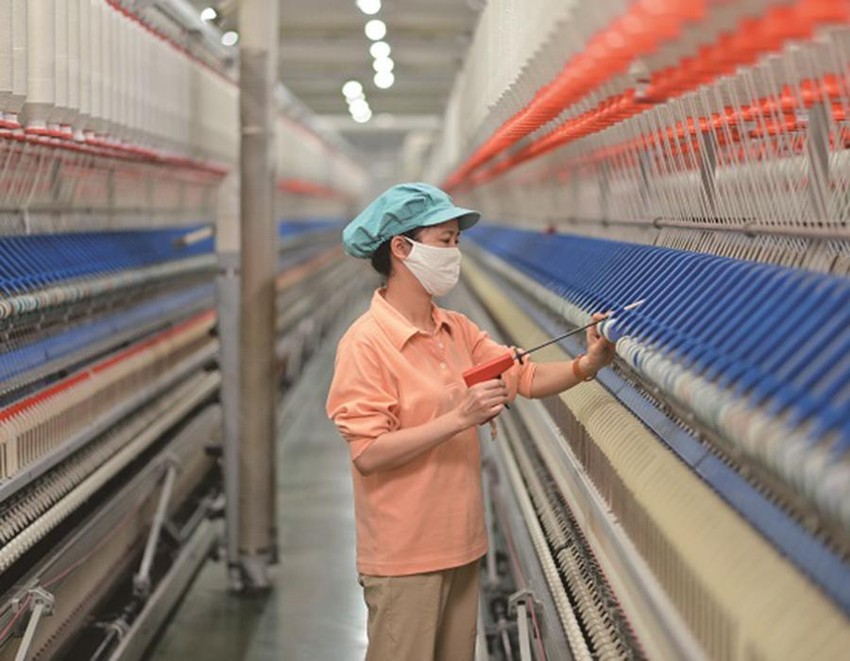The Ministry of Industry and Trade said that from 2017 to now, China (China) has always been in the leading position in terms of import turnover to Vietnam (VN) in the total import market. In the first seven months of this year, China continued to be Vietnam's largest import market with an estimated turnover of 72.45 billion USD, up 14.5% over the same period last year.
Goods imported from China are mainly input materials for production such as machinery, equipment, electronics and components; raw materials for textiles, leather and footwear; auto parts and components; fertilizers of all kinds...
There was a time when there were no production materials
For many years now, ministries, branches, associations, enterprises... have frequently called for increasing the localization rate, proactively sourcing raw materials in the country to minimize risks. However, in fact, domestic production and business is still very dependent on imported raw materials from abroad, especially from the Chinese market.

Textile and garment is one of the industries that relies heavily on raw materials imported from China. Photo: AH
It is this inadequacy and limitation that has caused many difficulties for Vietnamese companies, especially during the past two complicated years of the COVID-19 pandemic. There was a time when a series of companies in Vietnam's textile, garment, leather, footwear and electronics industries were in a situation of almost insufficient raw materials for production because China applied strict measures to prevent and control the epidemic, leading to supply shortages. fault.
Mr. Vu Van Tuyen, Director of Tuan Nam VP Company (Hanoi), specializing in importing auto parts from China, said that he has experienced difficult times because of the import of raw materials from China. .
“Usually importing a shipment takes about 45 days, during the COVID-19 epidemic, it lasts up to three or four months. The long import time has caused great damage to the company. Money is backlogged because when placing an order, 50% of the contract value must be pre-ordered, while most of it is borrowed money, and interest must be charged. Then the goods didn't arrive in time, there was no way to deliver them to customers, the competitors jumped in and took market share," Tuyen said.
Active ingredients
The Ministry of Industry and Trade said that from now until the end of the year, the ministry will continue to focus on removing difficulties for businesses and localities; remove bottlenecks in order to boost production, especially input materials, control imports and proactively supply domestic sources to replace imported sources.
Seeing the limitations when only focusing on importing goods from one market, Tuan Nam VP Company was forced to expand its import network to Japan, Indonesia, and Thailand to ensure that the supply of goods was always plentiful and not affected. break in unexpected situations. Along with that, the company orients itself to produce spare parts to supply the market, reducing imports.
Huynh Thi My, General Secretary of the Vietnam Plastics Association, also said that for the plastic industry, raw materials are most imported from Korea, Thailand, Middle East countries and China. Particularly for semi-finished plastic, China is the largest supplier to Vietnam.
“During the stressful period of the COVID-19 epidemic, companies importing semi-finished plastic products from China faced difficulties similar to many other industries, goods arrived intermittently. Therefore, companies are trying to find other markets to supplement such as Thailand, Malaysia ..." - Ms. My said.
The Chinese market is still a mystery
A representative of a textile and garment company admitted that depending on a few markets faced many risks, but China is close to Vietnam, and logistics and freight costs are cheaper than in other markets. However, if they depend too much on a few markets, Vietnamese companies will face many difficulties if the supply chain is broken.
Sharing the same opinion, Dr. Nguyen Bich Lam, former Director of the General Statistics Office, emphasized: “We need to diversify the supply. The government needs to have fiscal policies or credit support for manufacturers and traders to diversify markets to access. The Chinese market is still unknown, while the pandemic is still breaking out in some places."
Continuing to share, the former director of the General Statistics Office said that since the pandemic, in world economic forums, experts have emphasized that it is necessary to review some activities of the global supply chain. demand, especially geopolitics and geo-economics. The context is to build regional supply chains, specifically to build supply chains with close trade and political relations with each other. Besides, it is necessary to speed up supporting industries, minimize processing and assembly to reduce import dependence.
Ms. Phan Thi Thanh Xuan, Vice President and General Secretary of the Vietnam Leather, Footwear and Handbag Association, also said that Vietnam has made good use of the strength of free trade agreements for export, but has not made good use of it. opportunities to import from these markets, especially the EU. “The EU has high-value raw materials for the production of footwear at a higher level; or like the import of new equipment and technologies because in the current context the whole world is moving towards sustainable production and the use of green and clean technology” - Ms. Xuan said.•
AN HIEN
https://plo.vn/gap-rui-ro-vi-nhap-nhieu-nguyen-lieu-tu-trung-quoc-post693336.html
plo